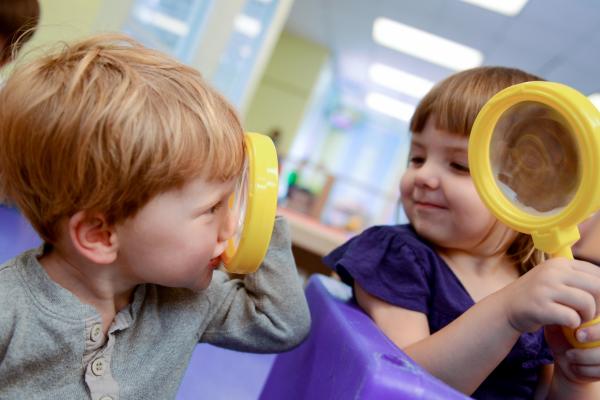
Including Young Children With Disabilities in STEM Activities Offers Access to Lifelong Learning
Young children are natural-born scientists, experimenting within the world around them from their very first days. Using the senses to investigate and observe surroundings, taking things apart, and testing various ways to move or operate the objects in their environments are all early STEM activities, an active participation in the fields of science, technology, engineering, and math.
Years ago, as a high school math teacher, Chih-Ing Lim, PhD, often encountered students she knew would have had better experiences in school if they'd had more active participation in these kinds of activities at a younger age. Instead, they were told they were poor students or simply not as smart as others.
"STEM activities are how very young children build their foundations for lifelong learning," says Lim, now an advanced technical assistance specialist at the UNC Frank Porter Graham Child Development Institute. "We know that if we capitalize on that natural sense of curiosity, discovery, and problem-solving early on, we can really make a difference."
Research shows that being included has at least the same outcomes, if not better outcomes, than being excluded, and that participation is itself a positive outcome. But, while it may sound simple, not all children are given equal access to these activities that have the power to boost brain development and spark curiosity and joy. Very young children with disabilities are often excluded from STEM activities in educational settings, mostly due to attitudes and beliefs about those children's capacities for learning.
"This missed opportunity is detrimental for these children," says Megan Vinh, PhD, also an advanced technical assistance specialist at FPG. "It's not just that they are being excluded from this—it's really an opportunity they are denied, and that is a true inequity."
Vinh and Lim are co-principal investigators on a new project: STEM Innovation for Inclusion in Early Education Center (STEMIE). Recently funded by the U.S. Office of Special Education Programs (OSEP), STEMIE is a national center that builds knowledge on early STEM learning for young children, especially those with disabilities.
"There are a lot of reasons young children with disabilities are not included in STEM," says Vinh. "They might be removed from the group to receive other services while classmates are doing STEM activities, or their schools think they don't need STEM because other areas of learning are more important. But we know from research that engaging in STEM supports gains in other content areas, so it's critical they participate."
Vinh and Lim will spend the next five years building a comprehensive model that will work at multiple levels to make sure children with disabilities ages birth to 5 can participate in STEM activities. By creating a model that considers everything from best practices on how young children explore through STEM and how best to imbed this knowledge into college coursework for teachers, to guidance on implementation science and the collection of family perspectives, the STEMIE team wants to make sure that inclusion is not simply an add-on to early education, but an integral part of it.
Inclusion has positive outcomes for both the children with disabilities and kids without, says Lim.
"STEM can be its own intervention, in a way. For instance, it's another way to be social. Often, you're working on these activities with other children, and it's a natural opportunity for kids to work together and make connections. Children without disabilities build empathy, and they begin to learn that differences don't automatically mean exclusion," says Lim.
Everyone loses when people aren't included, says Vinh.
"In later years, children with disabilities are often not enrolled in STEM classes, so if we continue to deny these children the opportunities to participate in STEM activities, the gap will continue to widen. And it doesn’t have to be that way," she says. "We are all members of a community, so when we exclude people, no one wins."
